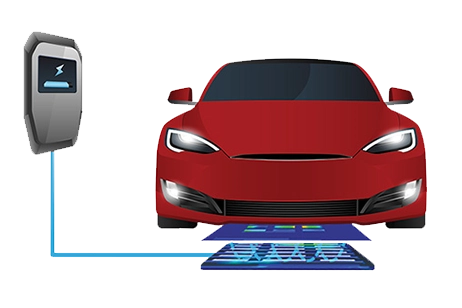Electric Vehicle Electromagnetic Simulation
Simulate EV motors, inverters, busbars, charging coils and cables to evaluate losses, efficiency, heating and EMI before building hardware.
Electric vehicles combine high currents, fast switching and tight packaging, which makes electromagnetic effects critical. EMWorks models motors, inverters, battery busbars, charging coils and cables on their 3D geometry, computing fields, forces, losses, temperature rise and EMI so you can check performance and clearances and adjust designs before tests.
-

EV Battery Charging
Use EMWorks to model EV battery chargers directly on your 3D geometry. Evaluate efficiency, losses, thermal limits, fields and EMC so you can meet performance and safety targets with fewer prototypes.

